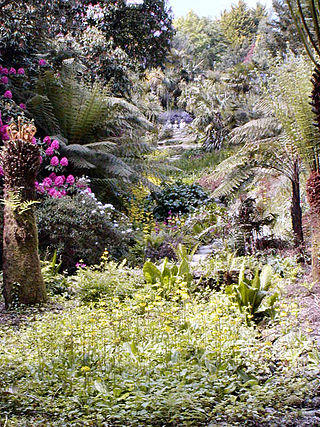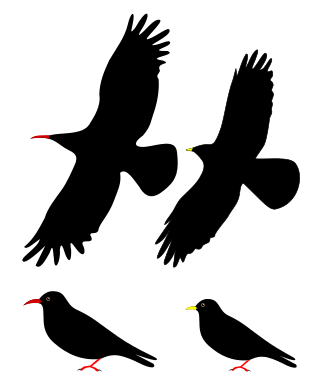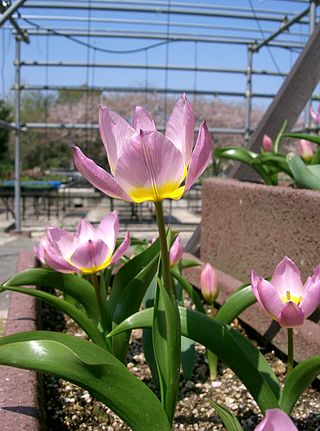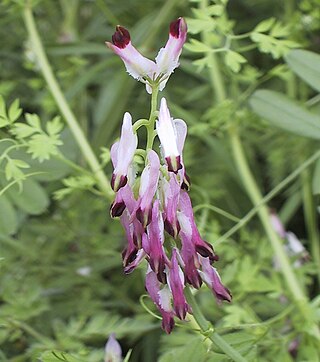
Fumaria is a genus of about 60 species of annual flowering plants in the family Papaveraceae. The genus is native to Europe, Africa and Asia, most diverse in the Mediterranean region, and introduced to North, South America and Australia. Fumaria species are sometimes used in herbal medicine. Fumaria indica contains the alkaloids fuyuziphine and alpha-hydrastine. Fumaria indica may have anti-inflammatory and analgesic potential.

Fumaria officinalis, the common fumitory, drug fumitory or earth smoke, is a herbaceous annual flowering plant in the poppy family Papaveraceae. It is the most common species of the genus Fumaria in Western and Central Europe.

The Davey Elm, Ulmus × hollandica 'Daveyi', is an English hybrid cultivar of unknown specific origin, generally restricted to the valleys of Cornwall. Its apparent south-west England provenance, along with its foliage and habit, suggest that it may be a hybrid of Wych Elm and Cornish Elm.

The geography of Cornwall describes the extreme southwestern peninsula of England west of the River Tamar. The population of Cornwall is greater in the less extensive west of the county than the east due to Bodmin Moor's location; however the larger part of the population live in rural areas. It is the only county in England bordered by only one other county, Devon, and is the 9th largest county by area, encompassing 3,563 km² (1,376 mi²). The length of the coast is large in proportion to the area of the county. Cornwall is exposed to the full force of the prevailing south-westerly winds that blow in from the Atlantic Ocean. To the north is the Celtic Sea, and to the south the English Channel.

Cornwall is the county that forms the tip of the southwestern peninsula of England; this area has a mild and warm climate regulated by the Gulf Stream. The mild climate allows rich plant cover, such as palm trees in the far south and west of the county and in the Isles of Scilly, due to sub-tropical conditions in the summer.

Fumaria bastardii, commonly, tall ramping fumitory or bastard's fumitory, is a tall, many-branched herbaceous flowering plant native to Western Europe including the British Isles and the northern Mediterranean. The species is a weed of arable and disturbed ground, and occurs as an introduced alien in many areas of the world with suitable climates, including Southwest Australia and North America.

Fumaria muralis, known as common ramping-fumitory or wall fumitory, is a flowering herbaceous plant in the poppy family (Papaveraceae) native to western Europe and northwestern Africa.

Frederick Hamilton Davey (1868–1915) was a British amateur botanist who devoted most of his leisure time to the study of the flora of Cornwall, England. Born at Ponsanooth in the Kennall Vale, Cornwall to a large family of limited means, he left school aged 11 to work in the Kennall Powder Mills. Encouraged by his father and local vicar, Davey took to Nature Study as his principal recreation. Of rather a weak constitution, he suffered successive bouts of ill-health, but used his convalescence to further his studies. In 1891, aged 23, he submitted his first paper to the Cornwall Polytechnic Society, followed by several more, earning him various medals in recognition of his industry.

The birds of Cornwall are in general a selection of those found in the whole of the British Isles, though Cornwall's position at the extreme south-west of Great Britain results in many occasional migrants. The nightingale is one English bird which is virtually absent from Cornwall.

White Island is one of the larger unpopulated islands of the Isles of Scilly, part of the United Kingdom, and lies off the coast of the northernmost populated island of the group, St Martin's, to which it is joined by a tidal causeway, or isthmus. The island is designated as a Site of Special Scientific Interest (SSSI) and a Geological Conservation Review site and is managed by the Isles of Scilly Wildlife Trust on behalf of the Duchy of Cornwall.
British NVC community OV6 is one of the open habitat communities in the British National Vegetation Classification system. It is one of six arable weed and track-side communities of light, less-fertile acid soils.
British NVC community OV13 is one of the open habitat communities in the British National Vegetation Classification system. It is one of eight arable weed and wasteland communities of fertile loams and clays.

Wingletang Down is a Site of Special Scientific Interest (SSSI) on the southern side of the island of St Agnes in the Isles of Scilly, England, UK, which is noted for its biological characteristics. The site is managed by the Isles of Scilly Wildlife Trust and is within the Isles of Scilly Heritage Coast and the Isles of Scilly Area of Outstanding Natural Beauty. It is the only site in Great Britain and Ireland for the small fern, least adder's–tongue. As of 11 September 2009 the SSSI was considered to be in ″unconditional recovering″ condition because European gorse and bramble are at unacceptable levels.

The Eastern Isles are a group of twelve small uninhabited islands within the Isles of Scilly Area of Outstanding Natural Beauty, part of the Scilly Heritage Coast and a Site of Special Scientific Interest (SSSI) first designated in 1971 for its flora and fauna. They have a long period of occupation from the Bronze Age with cairns and entrance graves through to Iron Age field systems and a Roman shrine on Nornour. Before the 19th century, the islands were known by their Cornish name, which had also become the name of the largest island in the group after the submergence of the connecting lands.
Job Edward Lousley was a banker by career, a renowned amateur botanist and an author of many publications including ″Wild Flowers of Chalk and Limestone″ in the New Naturalist series and the first flora of the Isles of Scilly published in 1971.

Tulipa saxatilis is a Greek and Turkish species of plant in the genus Tulipa of the family Liliaceae.

Fumaria capreolata, the white ramping fumitory, is an herbaceous annual plant in the poppy family Papaveraceae. It is native to Europe, western Asia and northern Africa and naturalised in southern Australia, New Zealand, and southern South America. Common names include climbing fumitory, ramping fumitory, white fumitory, white ramping fumitory and white-flower fumitory.
Eliza Standerwick Gregory or Eliza Standerwick Barnes was a British botanist.

Fumaria purpurea, known as purple ramping-fumitory, is an annual flowering herbaceous plant in the poppy family which is endemic to the British Isles.














